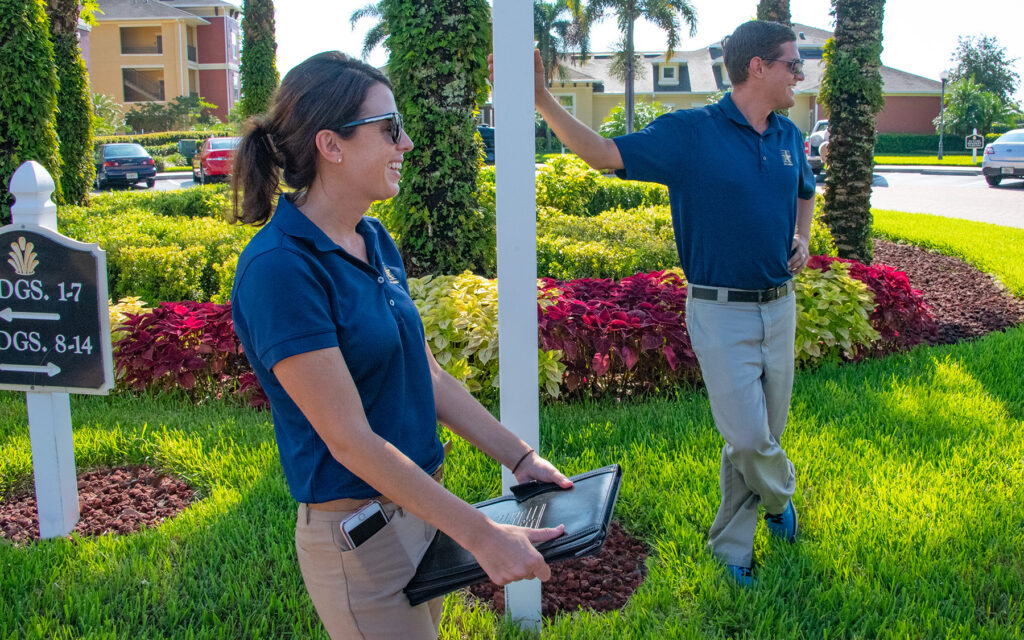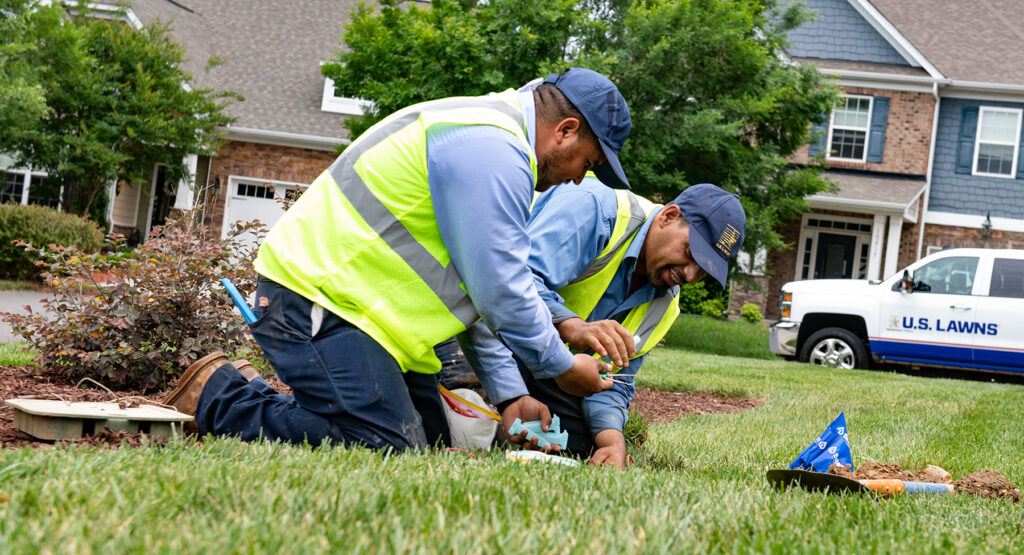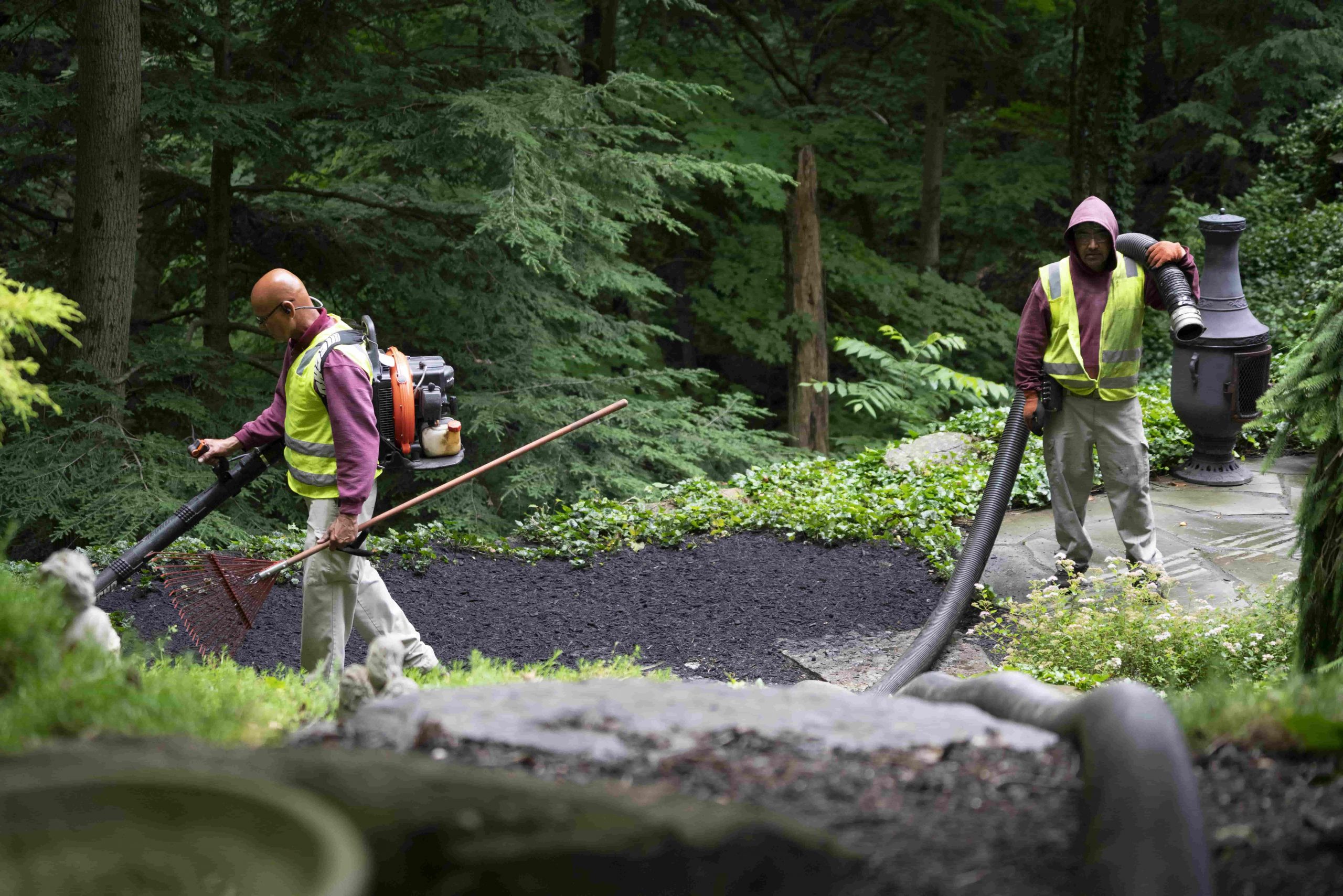When things are going well in your landscaping business, it feels great. You’ve got everything in control, customers are happy, and the work is being done on time.
But when things go wrong, it can make everything grind to a halt. Whether it’s a vehicle breaking down, employee injury, or even stolen tools, it has a huge knock-on effect. And if you can’t afford to immediately resolve the issue, it could stop you from delivering the work or picking up more projects.
This is why insurance is essential to your landscaping business. It gives you the peace of mind to focus on your work without worrying about the potential financial burden if anything goes wrong.
But even though insurance is so important, it’s not always clear exactly what insurance you need, and what each type covers. Which is why we’ve written this guide for you. In this article we’re going to explain why insurance is so important, and who needs it. We’ll also walk through the different types of insurance and how to choose the right policy for your business.
By the end of this guide, you’ll have everything you need to set up your insurance you need, so you don’t have to worry about things going wrong.
What is landscaping insurance?
In the simplest terms, landscaping insurance protects your landscaping business from risks such as property damage, injury, and legal liabilities. It safeguards you against unexpected losses and helps you to remain compliant with legal requirements.
Here are the common risks you can get covered for:
- Property Damage: Accidental damage to client’s property (e.g., broken windows, damaged driveways), damage to underground utilities during excavation, and unintentional harm to existing features
- Accidents: Injuries to third parties due to equipment or ongoing work, vehicle accidents, and slips and falls on landscaped areas
- Employee Injuries: Work-related injuries from tools or machinery, exposure to harmful chemicals or pesticides, strains or injuries from heavy lifting
Importance of insurance in landscaping
We touched on this in the intro, but insurance is important because it shields you and your business from incurring potentially devastating costs in the event of an accident or incident.
Not only can it pay to replace key vehicles or equipment, but depending on the type of insurance, it can also cover legal fees and settlements in case lawsuits come up.
Having the right insurance in place not only gives you peace of mind that you can work without worrying about potential liabilities, but it also helps you to build trust with your clients. That’s because it shows them you do business in a professional and responsible way.
It also guarantees business continuity, so you don’t end up letting clients down because something has gone wrong. And it makes it easier to keep hold of employees and recruit new ones, because their safety and income is covered.
Want to save on your landscaping insurance premium?
Greenius subscribers can get up to 20% off when they buy through Botson Insurance!
Who needs landscaping insurance?
The short answer to this question is…everyone.
The slightly longer answer is that anyone whose business is in any way similar to landscaping, you probably need landscaping insurance. Here’s a list of company types for reference:
- Landscaping
- Lawn care
- Tree trimming and removal
- Garden maintenance
- Irrigation installation
- Hardscaping
- Landscape design
- Commercial landscaping
Note: This list isn’t exhaustive, so just because your business type isn’t on this list, it doesn’t mean you don’t need insurance

Types of landscaping insurance coverage
It would be lovely and simple if there was a single ‘Landscaping Insurance’ you can take out to protect your company, but unfortunately, it’s not that simple.
Instead, there are five main types of insurance you will probably need, so we’ll break these down for you now.
General Liability insurance
General liability insurance protects you against the common risks associated with being a landscaping company. This includes things like third-party bodily injury, property damage, and legal expenses.
For example, if a client gets injured by tripping over a piece of your equipment, your general liability insurance will cover both the medical bills and any potential legal expenses.
This type of insurance is essential because it covers you against the most common things that could go wrong on the job.
Workers’ Compensation
While general liability cover has a broad focus, workers compensation insurance is focused entirely on protecting your employees well being and livelihood.
Workers compensation covers employee injuries and illnesses occurring on the job and provides medical benefits and wage replacement. Although protecting your team is incentive enough, this type of cover is legally required in most states for any business with employees.
For example, if an employee strains their back while lifting heavy equipment, both their medical treatment and wages will be covered under workers compensation insurance.
As well as the obvious benefits to your employees, this insurance protects your business from potential lawsuits from workplace injuries, and helps you stay compliant with state regulations. It can also be an added incentive for people to come work for you.
Commercial Auto Insurance
The vehicles you use day-to-day are as instrumental to the success of a landscaping project as the people working on it. Commercial auto insurance covers these vehicles against accidents, damage, and liability while being driven for work.
For example, if a member of your team hits another vehicle while driving to a job site, you’re covered for any repairs or liability. Both on your vehicle, and the vehicle it hit.
This isn’t just important because it’s mandatory in most states, but it also protects you from huge costs and huge delays. Losing a key vehicle could cost tens of thousands of dollars to replace, which you might not have.
Related: How to Price Landscaping Jobs
Tools & Equipment Insurance
Similarly, you need your tools and equipment to get your work done to a high standard. If you lose these, it can have serious delays, and cost a lot of money to replace. That’s why tools and equipment insurance is so important. It covers lost, stolen, or damaged tools and equipment, protecting the gear you use day-to-day.
For example, if your lawn mower gets damaged by a hidden rock, you can easily replace or repair the mower without a massive financial outlay.
This minimizes downtime and costs you far less than it would without the insurance. And it covers both owned and rented equipment.
Professional Liability Insurance
Instead of protecting against certain incidents, accidents, or damage, professional liability insurance protects you against claims of negligence, errors, or incomplete work. Or in simpler terms — it covers you in case you’re accused of making a mistake.
For example, if you’re accused of making a mistake while designing drainage into a garden, and it causes damage to the property, your professional liability insurance covers any legal defense.
Not only does it cover your legal defense, but also pays for any damages if you are found liable for professional mistakes. Which means you’re you’re covered if someone makes a mistake.
The cost of landscaping insurance
The total business costs of landscaping insurance can range from several hundred to several thousand dollars per year. The reason we can’t be more specific is that it depends on a number of key factors:
- Business size: Larger businesses tend to face higher premiums due to increased exposure. The more employees, equipment, and jobs you have, the higher the risk.
- Location: Where you’re based affects an insurer’s risk assessment. This includes things like urban vs rural, state regulations, and natural disaster likelihood.
- Annual revenue: The more money you make, the more extensive your operations. To insurers, this translates into risk.
- Risk profile: Speaking of risk, your risk profile will take into account the types of service you offer, any chemicals or heavy machinery, and your claims history. The more things on your risk profile, the more you’ll be charged.
- Equipment and vehicle value: The more tools and vehicles you have, and the more they cost, the more this will impact your premiums. More expensive or specialized equipment will make your insurance more expensive.

How to choose the right insurance policy
Step 1: Evaluate your business needs
The first part of this process is to assess the specific needs and risks that come with your landscaping business. This will include the types of service you offer, the number of employees you hire, and the equipment you use. It can also be useful to identify areas where you’re not currently covered, but want to be.
Step 2: Research available coverage options
Next you need to familiarize yourself with the different types of insurance we talked about above. Make sure you’re confident you know what they all are, and do more research if you’re not. Then you can make a list of the types of insurance you need, and what you expect from them.
Step 3: Compare insurance providers
Once you know what you’re looking for, the next step is to gather quotes from multiple insurance companies. Before just picking the cheapest option, review their coverage limits, premiums, policy exclusions, and customer service reputation. These things will help you know exactly what to expect, and what not to expect from the provider.
Step 4: Review and adjust regularly
Insurance isn’t a set-it-and-forget-it kind of job. You should regularly review and reassess your insurance needs to make sure it still matches your business. As you grow, your risks and needs will evolve, and you need your insurance to mirror this.
FAQs about landscaping insurance
Without landscaping insurance, you’re leaving yourself wide open to lawsuits, medical expenses, property repairs, and a variety of other costs. Without the appropriate cover for these things, you could make devastating financial losses, or even lose your business.
Here is a quick summary of the claims process:
1. Report the incident
2. Gather evidence
3. Complete claims forms
4. Submit the claim
5. Claim is investigated and a decision made
6. Receive compensation
Yes, you can often bundle your insurance policies, such as auto, general liability, and tools insurance. This can help you save money and simplify your policy management.




